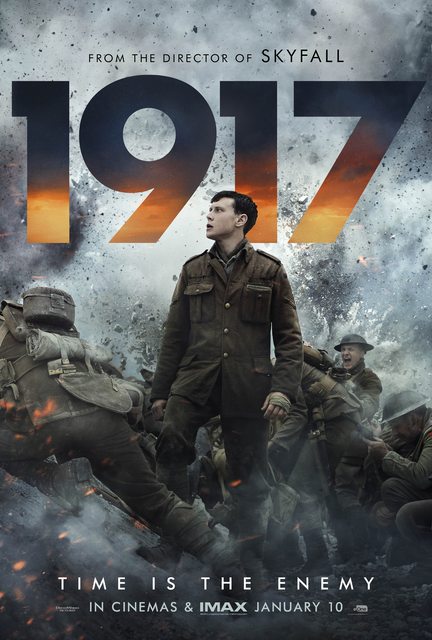
The past decades have seen many great war movies like “The Hurt Locker,” “Hacksaw Ridge,” and “Dunkirk,” But if I have to pick one, Sam Mendes’s “1917” takes the cut. With its extraordinary cinematography, the film has been considered “The best war film since “Saving Private Ryan’” by critics
The film, based in WWI, follows the true story of two British soldiers, Tom Blake and William Schofield. In France 1917, they were assigned to deliver a confidential message to a regiment of 1600 men. If they failed the mission, the regiment would have been ambushed by the German army, leading to a fatal defeat.
Although the film was made from several shots, the editing makes it look like only one camera follows characters in the entire 120 minutes, known as one-shot technique. Through this technique, Mendes highlights the continuity and tension of the war. Viewers feel the unceasing focus of the soldiers and the endlessness of their mission. Because there is no rest on the battlefield, the film would have been partly ruined had a pause been created in it.
Along with 1917’s seamless editing, meticulously crafted details in the film bring it closer to reality. The film crew had to set up miles of trenches, calculating the sizes precisely so that the camera could capture every motion of the soldiers. Even the sunlight had to be exact: the brief moment in which the boulders’ shadow falls on the wall coincides with the run of the character. These details, though small, bring the two soldier’s experience to life.
“1917” depicts the war from an unconventional angle. Instead of bloody battles stacked with bodies, Mendes makes the film more gentle and personal. The two men do not see their adventure by their eyes but their souls. The terror of war cannot stop them from seeking and appreciating the ephemeral beauty of the world. This makes the film powerful as it cherishes the values of humanity in a horrendous situation.
The brutality of war is reflected on the personalities of two soldiers. Blake is a newbie who often tells jokes and acts recklessly, while Schofield is a veteran pragmatic enough to swap his medal of honor for a sip of water. Blake and Schofield’s clashing natures reflect the divisiveness caused by war, among both friend and foe. Having seen all the horrible crimes in previous fights, Schofield has lost all the carefree feelings that Blake has. The image of miserable Schofield is a strong condemnation of the war, revealing its horrific effects.
Although the film does not contain many violent killings, “1917” is full of heartbreaking and extreme emotions. Blake and Schofield detest every moment of their journey, but they have no options. In once scene, Schofield falls on his knees and cries, unable to take the agony, but he immediately steps up and runs even when his feet are still trembling.
“1917” earned a big victory in 92nd Oscars, winning Best Cinematography, Best Visual Effects and Best Sound Mixing. The film’s success is a well-deserved award for such mesmerizing experience it brings for movie lovers.


